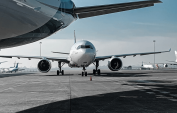
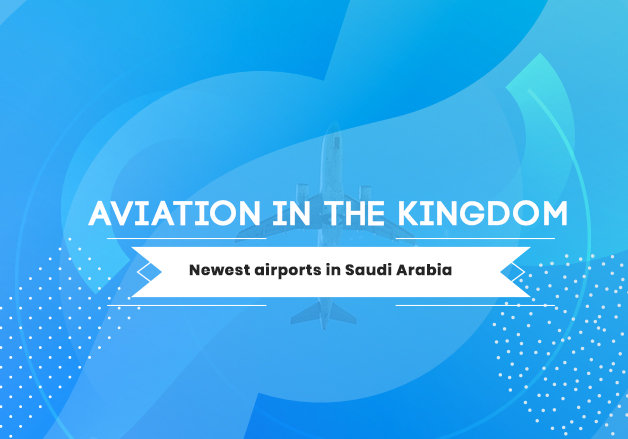
The Kingdom of Saudi Arabia is a very spacious country. It is the largest country in the GCC and one of the largest countries in the world in terms of area. That is why there are numerous airports in Saudi Arabia.
The aviation sector in the Kingdom has been showing impressive growth over the past years. in 2017, Saudi Arabia recorded 8% passenger growth, and the numbers are rapidly increasing.
Furthermore, the domestic market is currently served by five airlines, as opposed to only two airlines a couple of years ago. This significant progress in the aviation sector is, of course, accompanied by building new airports and developing the old established airports in the kingdom.
Airports in Saudi Arabia are varied, ranging from the largest airport in the world, to small domestic airports, and most of them are modernly built and feature great amenities and facilities.
So let’s take a tour around some of the airports in Saudi Arabia and check the latest additions to the aviation industry in the Kingdom.
Under construction airports in Saudi Arabia
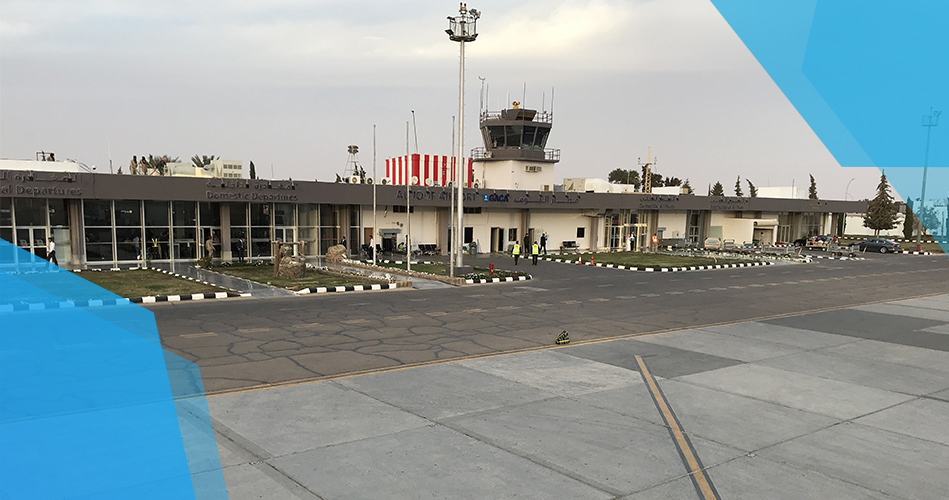
Work has started on two state-of-the-art airports at Al Jouf and Al Qurayat areas within the northern region of the kingdom.
When the projects are completed, the two airports will accommodate a combined capacity of 1.5 million passengers per year.
Al Jouf airport project will be built on the Unified Airports Model (B) which can accommodate one million passengers per year. Al Qurayat airport, on the other hand, will be developed as per the Unified Airports Model Plan (A), which can accommodate half a million passengers per year.
Al-Jawf currently comprises a small domestic airport with an area of 2,900 square meters, with a capacity of 175,000 passengers per annum. After the expansion, it will spread over an area of 13,000 square meters, with a capacity of one million passengers per annum. The expansion project comprises the construction of five new gates, a new VIP terminal, a Royal Hall, a new air traffic control tower and other facilities.
The Kingdom is also working on a project to develop King Abdullah International Airport Jizan. After development, the airport will have the capacity to handle 2.4 million passengers per annum. It lies in a strategic location between Jizan and Jazan Economic City.
King Abdulaziz International Airport, Jeddah
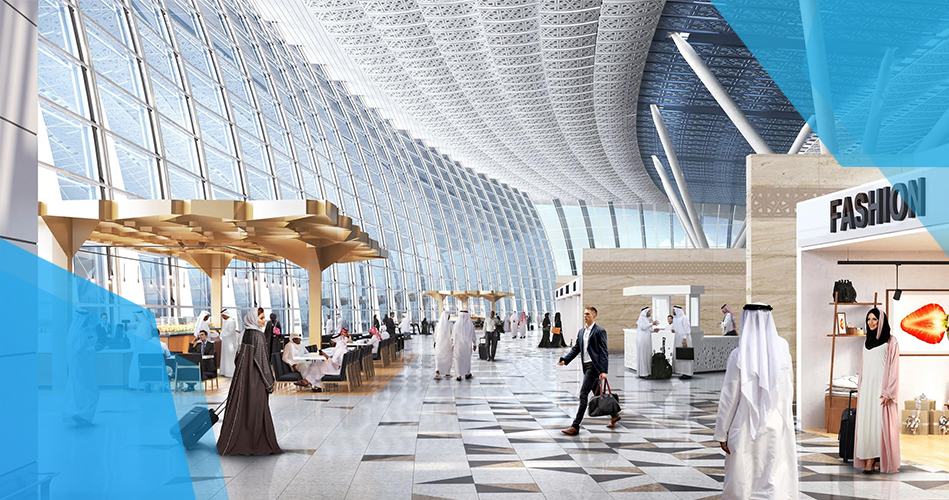
The new airport has been soft-launched last summer and has been welcoming some commercial flights since. However, the expansion is expected to be completed in 2025.
The soft launch included the opening of 6 passenger gates, but when completed, the airport will operate 46 gates with the option to add more if needed.
The original airport was inaugurated in 1981, but it has been recently expanded and developed.
The three-stage expansion project started in 2006. It is designed to increase the capacity of the airport from 13 million to 80 million passengers per year.
Spreading over an area of 15 square kilometers, King Abdulaziz International Airport is the third-largest airport in Saudi Arabia. It is also the busiest airport in the kingdom and the largest by passenger traffic.
This airport is mostly renowned for The Hajj Terminal, which is one of the largest terminals in the world. Extending over a vast area of five million square feet, The Hajj Terminal can accommodate 80,000 passengers at the same time. This one of a kind terminal is innovative and eco-friendly, it has received several awards for the imaginative design which combines air-conditioned halls and shaded open areas covered with an elegant tent-like white roof.
The expansion project includes a brand-new passenger terminal, the largest air traffic control tower in the world, an electronic passenger guidance system and a stormwater drainage network. The existing runways and airfield systems will also be upgraded.
King Khalid International Airport, Riyadh
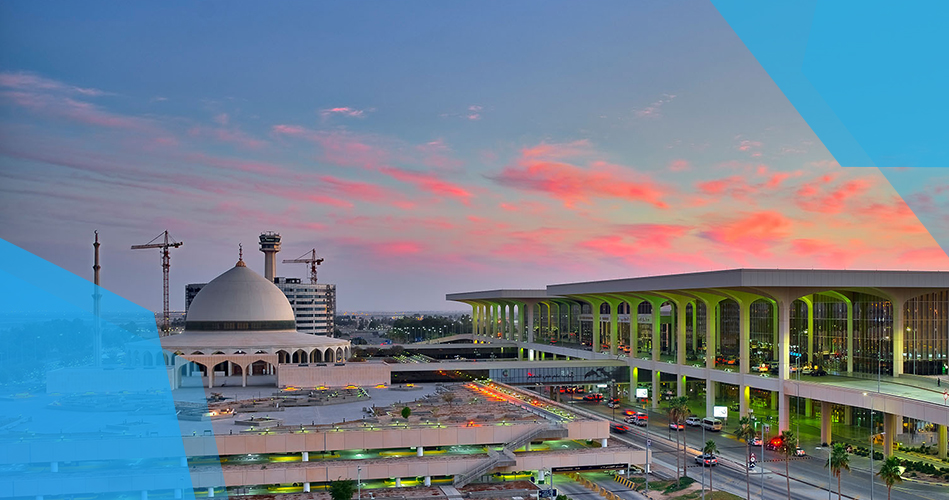
Already the second largest airport in the Kingdom, King Khalid International Airport is currently being expanded. Construction of the new expansion is scheduled to be completed in 2019.
The project includes refurbishing and expanding the existing Terminals 3 and 4 and increasing their capacity from 15 million to 25 million passengers per year. Terminal 3 serves as a domestic airport and terminal 4 will work as an international airport. The new project includes integrating both with the addition of a central building. The integrated design is set to make connected flights a very smooth operation.
The expansion project also includes the construction of a new fifth terminal, in addition to linking the airport with the new metro system in Riyadh.
King Khalid International Airport was opened in 1983. And through the years, it has witnessed one expansion in 2016.
As it features the second largest allocated area for an airport in the world, King Khalid International Airport was an alternative landing site for NASA’s Space Shuttle.
The airport also features one of the tallest control towers in the world, as well as two parallel 4,260 meters runways.
King Fahd International Airport, Dammam
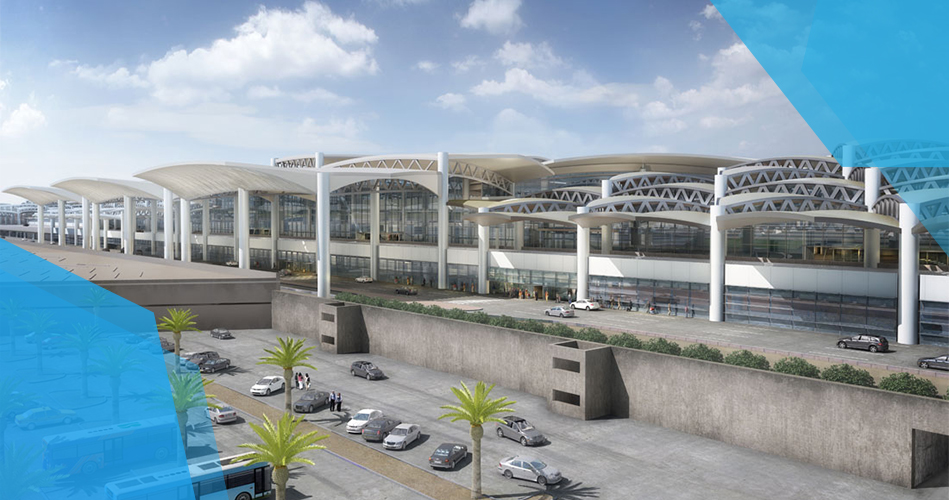
Opened for commercial operations in 1999, King Fahd International Airport is considered to be one of the newest airports in Saudi Arabia. It is also the largest airport in the world in terms of area.
Spreading over a massive area of 780 square kilometers, the huge area of the airport facilitated the landing of the largest aircraft in the world; In 2009, an Antonov 225 landed at Dammam Airport. It was transporting oil drilling equipment.
King Fahd International Airport is located in the Eastern Province of the kingdom, 20 kilometers away from Dammam. The strategic location of the airport allows it to host the shortest international flight in the Kingdom, which is between Dammam and Bahrain and the longest domestic flight in the kingdom, which is between Dammam and Tabuk.
Not all the area is currently utilized. The kingdom has more development plans for this airport.
As part of a multi-phased master plan, the capacity of the airport is set to increase to 30 million passengers per year, up from 12.6 million passengers currently.
King Fahd International Airport currently features two parallel 4,000 meters long runways, capable of accommodating the largest aircraft such as Airbus A340-600 and Boeing 747-400. Additionally, the expansion plans include paving the third runway.
Since the airport was opened, all airlines transferred their operations from Dhahran International Airport to King Fahd International Airport. That is why it currently serves most of the Eastern Region of Saudi Arabia, and why it became the third-largest traveling hub in Saudi Arabia.
The spacious airport is also home to OxfordSaudia, the first certified pilot training center in the GCC.
Refrences:
https://en.wikipedia.org/wiki/List_of_airports_in_Saudi_Arabia
https://www.worldatlas.com/articles/the-world-s-10-largest-airports-by-size.html
https://www.protenders.com/projects/al-jouf-domestic-airport-expansion
MORE ON


Apps for Pilots: The Top helpful Smart mobile applications
Aviation FacilitiesQUESTIONS ABOUT OUR FLIGHT ACADEMY? ASK A TRAINING ADVISOR





